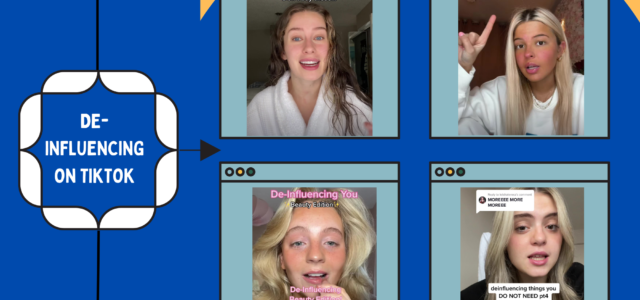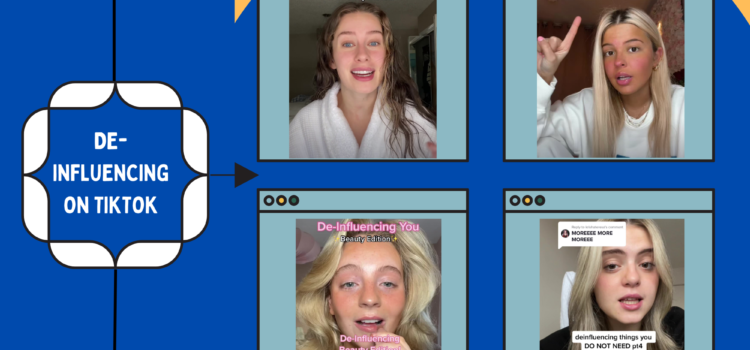

De-Influencing: a passing fad, or a break in the cycle?
Business & TechLifestyleNews Apr 21, 2023 Claudia Ovejero Pham

The last decade has been a period of high growth for the world of social media and consumerism. Social media influencers, who often have a reach of anywhere between thousands to millions, have the power to influence purchasing decisions and shape consumer behaviour. They have become a primary force in advertising products to their Gen-Z and millennial audience. Business of Fashion reports that the Gen-Z generation by itself has over $350 billion in purchasing power.
But as the world — both online and offline — begins to have bigger conversations on sustainability, pollution and over-consumption, especially in the post-COVID-19 economic situation, people are beginning to push back.
In recent months, a new trend called “de-influencing” has started gaining traction on the short-form video-sharing app TikTok. The hashtag #deinfluencing has over 449 million views, with thousands of videos from different creators.
But what is de-influencing? This concept is most easily understood as the antithesis of influencing and everything the influencer world represents. The trend is composed of videos that try to convince you to not buy something that has gone viral or is being shared by creators with massive followings. De-influencing as a concept exists to remove the hype built around products created by influencers. Yet the creators of these videos in turn tend to grow large followings themselves or end up suggesting cheaper alternatives instead of persuading people to not spend at all.
Jordan Foster, a University of Toronto Ph.D. candidate and sessional lecturer specializing in culture, media, and inequality, thinks while some may have a genuine mission to encourage people to buy less, the trend is paradoxical.
“The word de-influencer, in this case, is kind of a misnomer because their purpose is still to influence decision-making,” he says.
Foster isn’t the only one looking at this trend through with critical lens. Jen Knoch, writer, self-proclaimed tree-hugger and admin of her local “Buy Nothing” group (a community that barters and prioritizes sharing instead of buying) worries that trends like this aren’t actually breaking our “consumer cycles”.
Like Foster, she thinks de-influencing doesn’t necessarily convince people to not purchase. Knoch says that while some of the intentions behind this social media movement are rooted in an awareness of the environment, overconsumption and economic realities, these videos usually end up still telling you to purchase an item at a lower cost.
“I think that de-influencing is actually just substituting,” she explains.
While it may not be the most effective ecological messaging, for Gen-Z content consumers these videos can present as a breath of fresh air amidst the seemingly never-ending stream of posts — both organic and sponsored — telling you that you need whatever item they’re telling you about.
Toronto Metropolitan University student Hannah Zablocki thinks people are starting to realize the urge to buy the “next best thing” is unhealthy, both financially and environmentally.
“I enjoy the de-influencing trend a lot. TikTok and Instagram are so overwhelmingly consumerist, and I think it is very refreshing to hear about things that we shouldn’t buy. I think ultimately it does help people to not buy things, but only when it is done right,” she says.
Whether or not this is a fad, Foster believes that only time will tell, because the reality is that mainstream social media platforms “increasingly promote shoppable lives” and the key to really pushing more sustainable consumption habits is being more critical and challenging current consumer culture.
De-influencing as a trend may not have fully had the impact it set out to have, but one thing is for certain, it’s starting a conversation on the constant need to buy.
For those looking to take individual action to reduce over-consumption habits, Knoch suggests scaling back where possible and choosing alternatives like buying second-hand where possible, implementing a self-buying ban or simply making an active effort to give items a longer life. Foster also believes change is possible by challenging yourself to stop consuming items that aren’t necessary.
To him, the start of the solution starts with a change in mindset, “spend less save more and buy less stuff because we simply don’t need a lot of what we buy, right? And that’s something that I think everyone can get on board with.”






